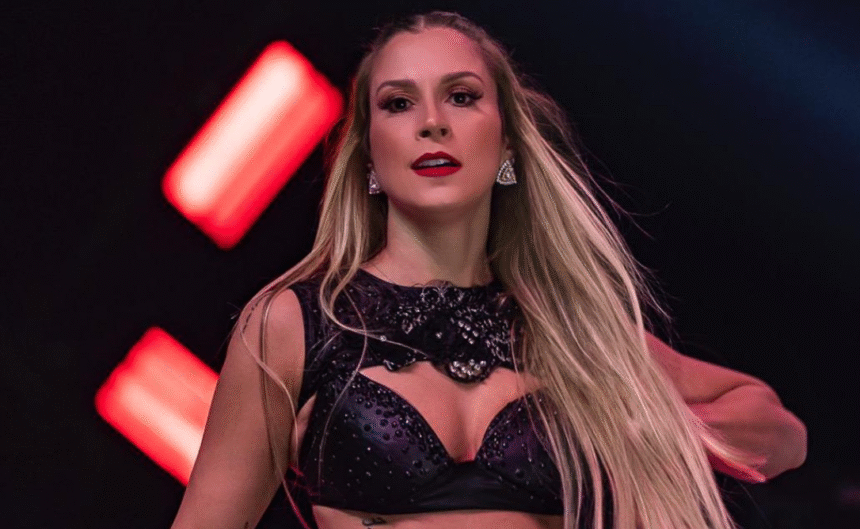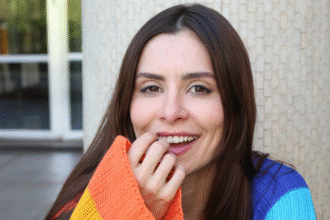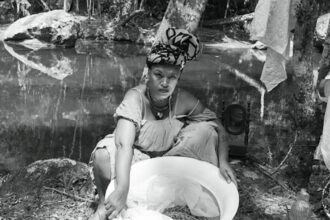With a solid career marked by dedication, Mariana Oliveira has been gaining a prominent place in Brazilian dance. A graduate of the renowned Bolshoi Brasil School in Santa Catarina, the dancer and dance instructor shone as a member of FitDance , one of the largest dance networks in the country. In addition, her versatility has taken her to prestigious stages, such as the ballet of the iconic band Raça Negra and the STAGE Art Center. Mariana has also expanded her talent to the audiovisual universe, participating in the music video “ Whind Dance – Cuzcuz ” by Whindersson Nunes, in 2021, and joined the SBT dance troupe, consolidating her career on television. With an impressive trajectory, the artist continues to enchant audiences wherever she goes.
You had a solid education at the Bolshoi Brasil School and, since then, your dance career has only grown. Looking back on this journey, what does dance mean to you today?
Dance, for me, means everything. It’s through dance that I’ve come to understand what art is, what belonging is, what connection is. I’ve been dancing since I was four years old, so there’s no version of me that isn’t connected to dance. It has sustained me and continues to sustain me — financially, psychologically, and emotionally.
Dance has given me opportunities that perhaps nothing else could: it has allowed me to get to know my country better, travel abroad, and have experiences that have transformed who I am. But more than that, it has taught me to live with people from very different financial backgrounds, with different gender identities, and with worldviews that have helped me grow.
Dance gives me a stability that no human being has been able to offer me. It is my foundation, my work, my healing, my expression. Dancing is existing in the truest way I know how.
Your career spans many different spaces, from the Raça Negra ballet to the STAGE Art Center. How do you balance these different styles and work environments?
It’s challenging to have/be in different environments, but that’s exactly the purpose I want to achieve with my work. I don’t want to act from just one perspective — I want to exchange experiences. Share what I live and learn from other people, whether they’re professionals or amateurs.
For me, dance goes far beyond the stage. It happens in the classroom, backstage, in rehearsals, on the streets, in academic spaces and in informal gatherings. And maintaining this double — or rather, multiple — schedule is intense. During the week, I teach classes, do rehearsals, create choreographies for debutantes, brides, special projects… And on the weekends, I’m always on stage, performing shows.
It’s a crazy rush, yes. It’s tiring. But at the same time, it’s extremely gratifying to realize that I’m exactly where I wanted to be, doing what I love, growing as an artist and as a person with each new experience.
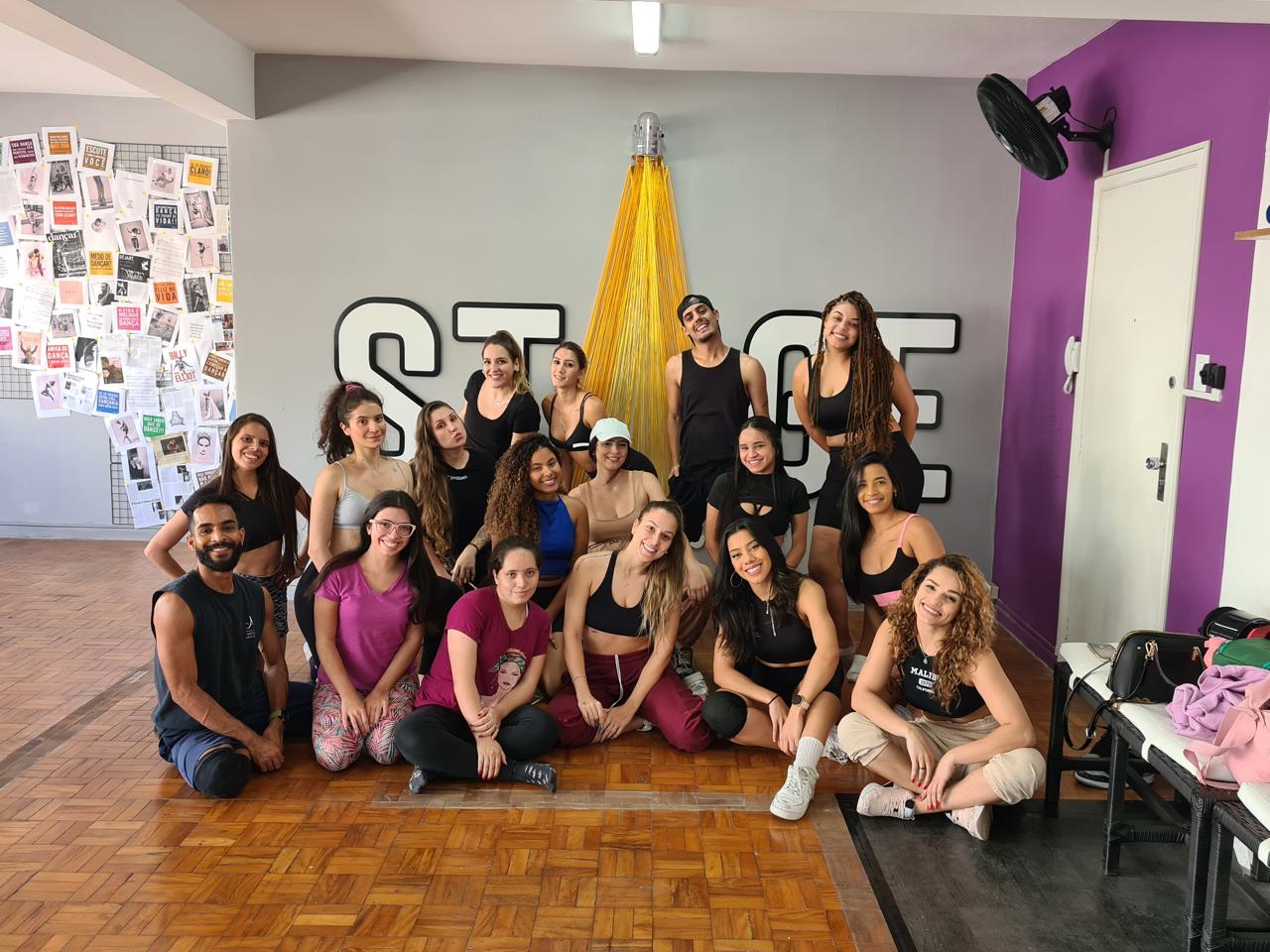
Being part of the SBT dance troupe must have been a unique experience. What was it like working on television and what were the biggest lessons you learned during that time?
Working in television was an incredible discovery for me. I never imagined that I would like it so much, but when I started recording programs for SBT, I realized how much it fulfilled me. It was a period of great learning and growth. I was lucky enough to work with wonderful choreographers and experience an intense and challenging routine.
From 2013 to 2020, I spent seven years recording Raul Gil’s show, participating in “Jogo do Banquinho” and other segments involving ballet. Television has a unique energy. You only have one chance: you go in, record, go on air. And that’s it. This format requires a lot of precision, focus and dedication.
I remember days when we would rehearse in the morning at SBT and in the afternoon we would record seven or eight different choreographies. It was a hectic schedule, but I loved it. I loved recording, I loved the environment, I loved the team — from the cameramen to the costume designers, makeup artists, dancers… it’s a huge team, and it’s beautiful to see so many people working together for a result that reaches thousands, maybe millions of people.
I am very proud to have been part of the history of SBT, one of the largest broadcasters in the country, and especially of the Raul Gil program. And it was there that I also experienced other incredible opportunities, such as meeting and working with Silvio Santos, which was a great honor. In addition, I had the privilege of being a private dance teacher for the presenter Eliana for two years, going to her house every week for our classes.
These experiences left a deep impression on me. Television gave me much more than visibility — it gave me connections, learnings and memories that I will carry with me for the rest of my life.
You have participated in projects ranging from classical ballet to the world of FitDance and commercial dance. How do you see the importance of this versatility for a dancer today?
This question is really interesting, because this week I’m looking for dancers for a project of mine — and I need artists with versatile bodies, who can move well between ballet, jazz, jazz funk, contemporary… And it’s really hard to find them.
Nowadays, many people have stopped taking classes. TikTok has revolutionized the dance scene in a way, especially during the pandemic, bringing a visibility that dance did not have on social media before. But at the same time, it has also brought a certain complacency. Many people think that choreographing, dancing, learning… is just about doing TikTok. Dance has become something very quick, very immediate. But real training, true versatility, requires time, dedication, study and research.
And this lack of training has a direct impact on my work as a choreographer. I often have to create within the dancers’ limits, because I can’t demand something that they don’t have the repertoire to perform. This restricts creativity, style, and narrative.
I trained at the Bolshoi Theater School in Brazil, where I had access to a wide range of training — ballet, tap, contemporary, circus elements, theater, percussion, piano… a real range. And I know how much this experience allows me today to create with more freedom and work in different contexts.
Versatility is not just a differentiator — today, it is a necessity. Because the market has changed, dance has expanded, and those who want to make a living from it need to be ready to go beyond a social media trend.
Furthermore, versatility develops a more prepared body, a more open mind and a richer artistic sensitivity. It does not mean being “good at everything”, but rather being willing to learn, experiment and constantly reinvent yourself.
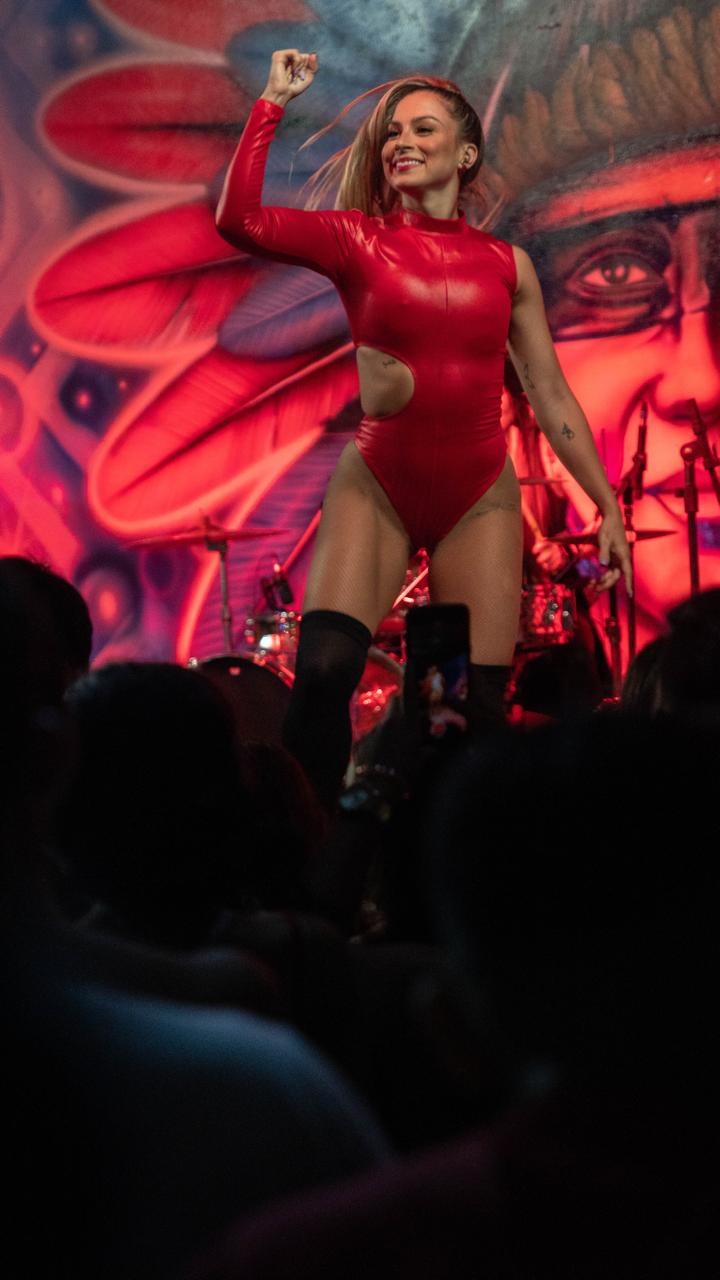
Your participation in the music video Whind Dance – Cuzcuz , by Whindersson Nunes, took your art to the digital universe. What was that experience like and what attracts you most about the connection between dance and audiovisual?
I had three great privileges in this project that left a profound mark on my career. The first was working with the choreographer Gustavo Santos (Gus – @gustavosantosw), whose work I had already admired online, but had never had the opportunity to experience up close. And it was exactly as I imagined — he is incredible, sensitive, creative, and it was a real learning experience to be by his side during this process.
The second was meeting and working with the multi-talented artist Whindersson. He impressed me in every way. He is a complete artist: he creates, performs, listens, suggests, proposes. He has an amazing creativity and a very broad artistic vision. He was present in every detail — choreographic elements, costumes, scenery, even camera positioning. Of course, he wasn’t the only one who thought of everything, but his touch is in every part of the work. It was a huge privilege to experience up close how he works artistically.
And the third meeting was with Júnior Marques (@juniomarques), creative director — an exceptional professional, who handled everything masterfully. The result was impeccable, and this is largely due to his sensitivity and technical eye.
This project made me reaffirm how essential audiovisual media is to dance. It expands our reach, connecting dance to new audiences, platforms, and languages. It is no coincidence that so many music videos use dance as a central creative force — dance has the power to communicate, to create emotion, to create impact.
It is no wonder that some of the most watched and remembered songs worldwide have choreography as a central element. One of the greatest examples is “ Gangnam Style ”, which exploded on the internet because of the striking dance — it was the choreography that went viral and carried the video. In Brazil, we saw this with “Show das Poderosas”, by Anitta. The strength of the dance there was decisive in turning the song into a success. Choreography has this power: it fixes, connects, goes viral — it immortalizes a moment.
Dancing live on Raça Negra’s stage must be exciting. Is there a special moment in a performance that left a deep impression on you?
Dancing with Raça Negra is, without a doubt, a privilege. We are talking about a band with over 40 years of success, which continues to draw crowds wherever it goes. And for me, this story goes beyond the stage — it touches my emotional memory.
I clearly remember my childhood, when I would go play at my cousin’s house. My aunt, completely in love with Raça Negra, would put the LP on while she cleaned the house. We would play to the sound of the band, and that stuck with me.
So, when I started to go on stage with Luís Carlos, especially during the song “Cheia de Manias”, which is his biggest hit, it was impossible not to get emotional. All those memories came flooding back. And hearing the audience singing in unison, feeling the power of that song… it’s a unique experience.
Being part of the history of such a great and respected brand as Raça Negra, even for a short time, is a huge honor. I take with me not only the professional experience, but also the friendship I have built with the other dancers.

In addition to shining on stage, you also work as a dance instructor. What motivates you most to teach and how do you see dance transforming students’ lives?
My goal when teaching dance goes far beyond technique. Sure, I teach steps, rhythms, styles — but what I really want is to transform feelings, ideas, perceptions. I want people who enter a classroom with me to leave different. Lighter, more confident, more connected to themselves.
Many people who take my classes don’t want to be professional dancers — and that’s okay. Everyone comes with a goal: to relieve stress, overcome shyness, reconnect with their body, make friends, challenge themselves. And I believe that dance embraces all of these goals. It has the ability to unlock and provoke profound internal changes, even in just one class.
In my class, you will laugh, you will challenge yourself, you will feel. And, above all, you will allow yourself. And that is what I want, to be an instrument of this transformation.
One of the most memorable moments in my career as a teacher was hearing the story of a student who was thinking about taking her own life. She came to me at a very difficult time and decided to teach a class. And in that moment, something changed.
She was enchanted by the class, the music, the people, and the energy of the environment. She began to come back, one time, then another, and dancing awakened in her a new will to live. She began to love herself more, to take care of herself, to allow herself to feel joy again.
Inside a classroom or on a stage, it doesn’t matter where you come from, what matters is how much you are willing to feel, to move, to allow yourself. This testimony had a profound impact on me, because it reaffirms everything I believe: dance goes far beyond movement. It is healing, it is encounter, it is transformation. It saves. That is why I continue to do what I do with so much love. Because teaching dance is also about welcoming stories, offering paths and, sometimes, being a point of light in someone’s life.
A career in the arts isn’t always easy. Were there any significant challenges you faced in dance that helped shape who you are today?
Working with art in our country is not easy. We have made progress, yes, but we still live in a reality where artists do not receive the same recognition as other professions. And this is reflected in everything: low salaries, lack of structure, constant devaluation. Dancers, in particular, are often judged and misunderstood.
But, looking back at my career, the biggest challenge that dance has brought me is not exactly within dance. It was outside of it. It was the distance.
I gave up many moments with my family because I chose to dance. I moved cities, let special dates pass me by, missed afternoon coffees, Sunday lunches, conversations before bed. And even with technology shortening distances, physical presence is missed. It’s missed a lot.
This is the price you pay for choosing to make a living from art in a country where opportunities are still very concentrated — especially in São Paulo, which is where you can really make a more consistent living from dance.
It’s crazy. I could list so many other challenges that dance has imposed on me. But, deep down, what weighs the most is what it has made me give up off stage. And yet, I continue. Because it is this choice that completes me.
All the effort I made to succeed in dance, to pursue my dreams, to prove that yes — it is possible to make a living from art, pay the bills, fulfill desires and be happy — transformed me. It made me a more mature woman, more confident in my choices, with a much broader view of the world.
Nothing comes easy. And if I don’t go after it, no one will go after it for me. My future is my responsibility. I am the one who builds each step, each achievement. And life, sometimes, tests us. It seems like it asks: “Are you sure?” And when that happens, it’s time to reaffirm: yes, this is what I want. Even with the sacrifices, even with the challenges, it’s worth it. Because in the end, I’m much happier with dancing. And all of this only reinforces that I chose the right path — even if it’s not the easiest.
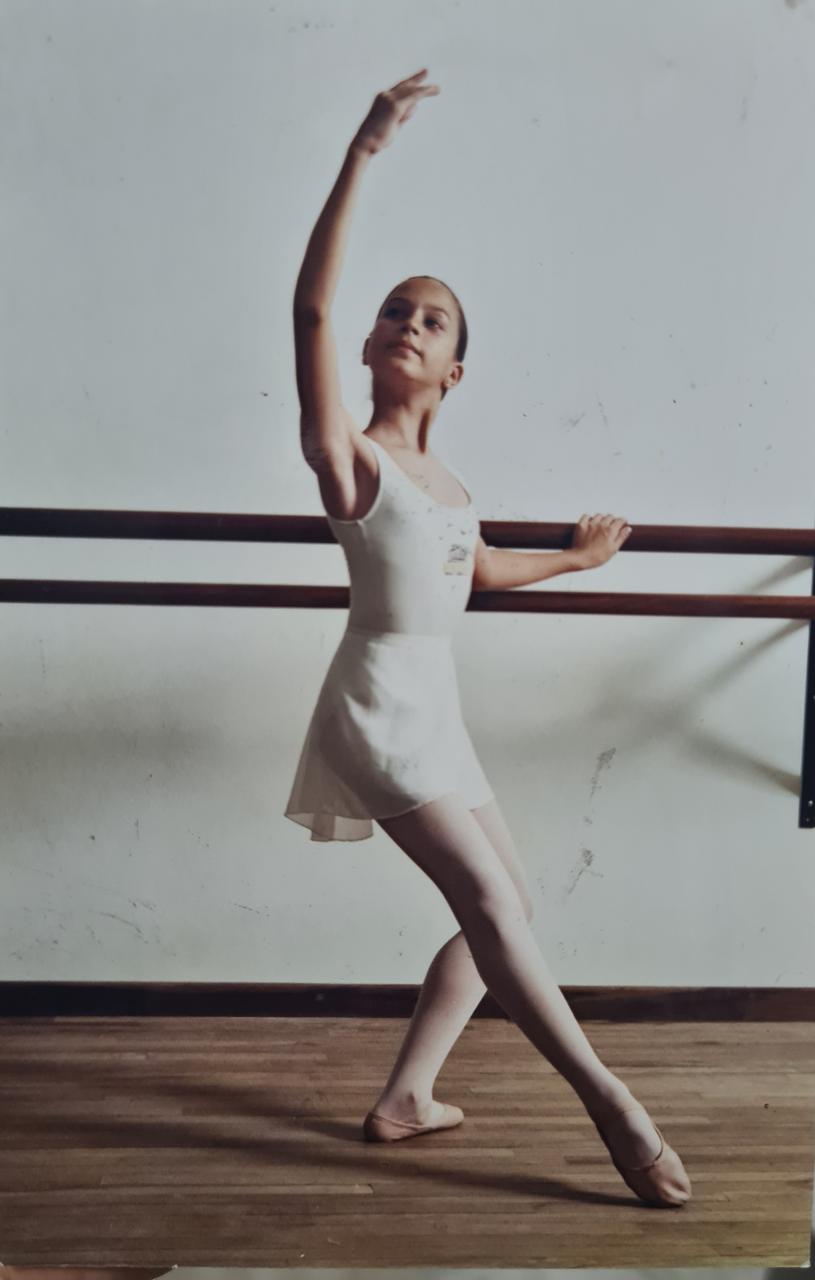
With so many achievements under your belt, is there any dream or future project that you still want to achieve in dance?
In addition to my dance studio, which has already begun to take shape with a lot of work and love, my goal is to see it grow more and more: full rooms, happy students, valued and well-paid teachers. A space where dance pulses with truth and acceptance.
But my dream goes beyond that. One of my biggest projects is to create a social dance project, aimed at children, teenagers and adults who cannot afford to pay for classes, school or training. I want to offer free classes, but more than that: I want to offer real opportunities for life transformation through dance.
This project goes beyond learning — it is a path. A path that can lead these students to work with dance: in shows, music videos, commercials, TV, theater, events. I want to show that dance is not just for those who can afford it. It is for those who feel, for those who dream, for those who are willing to give themselves over. Art can — and should — be accessible. And I want to be a bridge for that.
Finally, if you could define your dance career in one sentence, what would it be?
I have a tattoo that I carry with me that has a lot of meaning. It’s an old phrase that has always been an answer to any question I had, an answer that has driven me to take action. And although some people may find it dark or even negative at first glance, it is quite the opposite. It is a push, a call to action.
The quote is by Amyr Klink, a famous Brazilian sailor, and says: “One day you have to stop dreaming and somehow leave.” When I read it for the first time, something inside me woke up. And it makes perfect sense, because if you really want something, it’s not enough to just dream, you have to stop waiting and go after it, make it happen. Like in dancing: go for it! That’s what the quote reminds me of every day — the need to act, to take the step towards transformation, without fear of throwing yourself into the unknown.
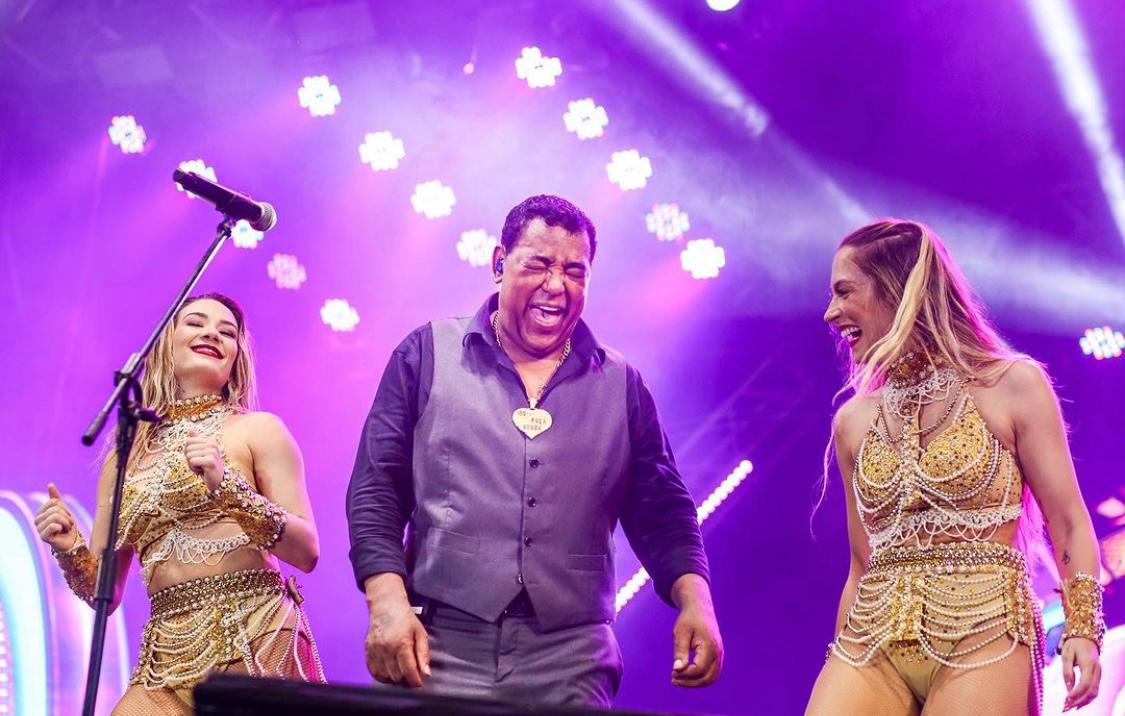
You recently had the opportunity to direct the ballet for the singer Belo’s show, which you said was quite unexpected. What was the most memorable moment during that period and what is the biggest challenge of taking on a project of this size?
I am currently the choreographer and artistic director of Belo’s shows, both his road shows and Belo in Concert , which is a side project of his. Sometimes it seems hard to believe that I am leading the ballet of one of the greatest artists in the country. It is a huge responsibility, but also an immense satisfaction and honor.
Without a doubt, the most memorable moment was the invitation to work with him. There, I realized the trust that the people involved in the project placed in my work, which motivated me to give my best in every aspect. My response to this invitation is, without a doubt, all my gratitude, commitment, talent and, above all, responsibility for the career of such a great artist.
The biggest challenge, without a doubt, is representing Belo. He is the artist who performs the most shows in the country, with a consolidated career spanning 35 years, and he draws crowds wherever he goes. The show is a truly emotional experience, with people singing from beginning to end, and the atmosphere is full of emotion and history. Working alongside someone with such a solid trajectory is both rewarding and challenging.
Despite all this legacy, Belo remains extremely current. The costumes, the scenery and even the audience have a very contemporary energy. It’s not just the audience that followed him in the 90s ; Belo also wins over teenagers and children, who sing his songs with passion. This requires me to constantly update myself, not only in developing the choreography, but also in the designs and movements that bring a new look to his performances, maintaining tradition while dialoguing with the present.
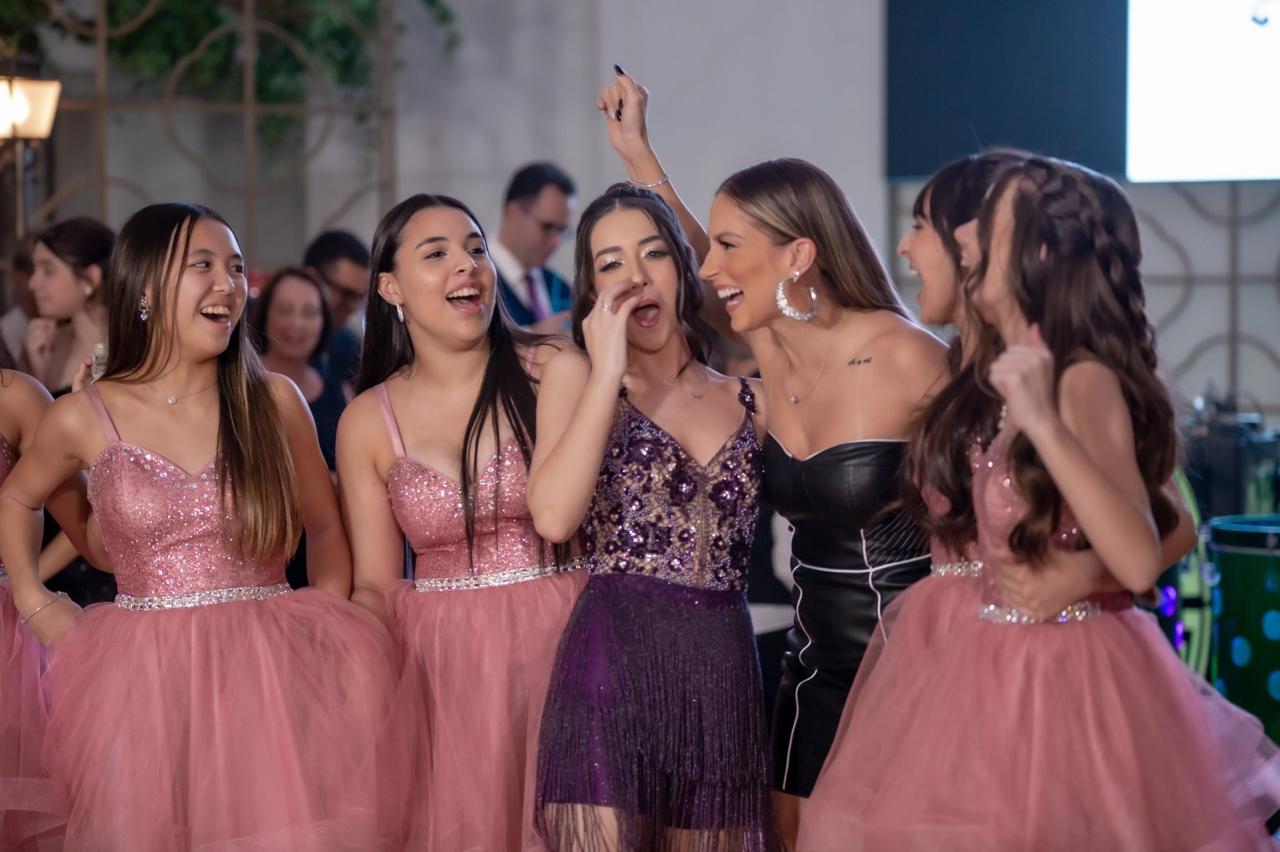
Follow Mariana Oliveira on Instagram

